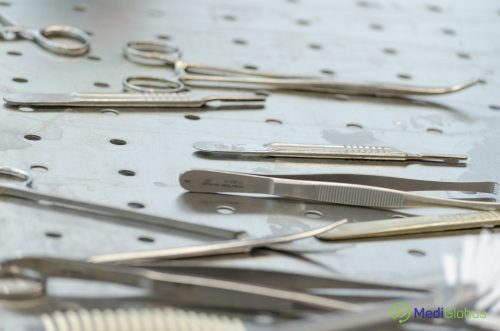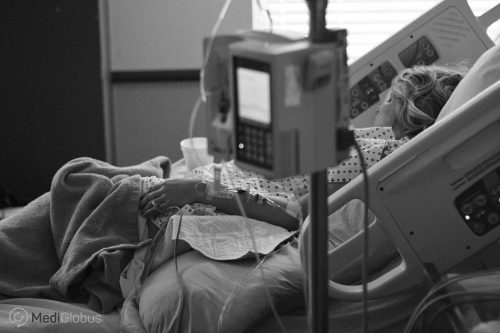Astrocytoma of the brain is a very dangerous tumor, which in half the cases turns out to be highly malignant. If the tumor is not diagnosed on time, the chances are high that a previously benign tumor will turn into malignant.
READ IN ARTICLE:
Why surgery is needed for astrocytoma of the brain
Methods of removal of astrocytoma
What happens after the removal of astrocytoma
Prognosis after astrocytoma surgery
WHY SURGERY IS NEEDED FOR ASTROCYTOMA OF THE BRAIN?
Surgical removal of the tumor is the main treatment for astrocytoma. The operation on astrocytoma consist of the complete removal of the neoplasm, its partial resection (if the tumor is too large and it is necessary to reduce pressure on the structures of the brain, or it has sprouted into other tissues), and also obtaining a sample of cells for histological examination. The operation is prescribed in 100% of cases of benign pediatric astrocytoma.
METHODS OF REMOVING ASTROCYTOMA

In neurosurgery today there are new techniques that allow to remove the tumor with high accuracy and not to touch any healthy tissues.
Before surgery, a special contrast substance is injected into the patient, which accumulates in the area of the neoplasm. It has fluorescent properties and, when viewed with special light, clearly stains the tumor in a certain color. All surgical manipulations take place under the additional control of 3D visual diagnostics, which ensures the superfluousness of the actions performed.
The operation is performed under general anesthesia, but if the neoplasm is located next to important functional centers, the patient is left in consciousness to monitor all important functions during the operation.
The tumor can be removed endoscopically – with the help of special equipment through small holes in the skull. Such intervention is considered to be minimally invasive and the operation itself takes 2-4 hours. The open surgery of astrocytoma, which involves trepanation of the skull, lasts up to 6 hours.
If the surgical procedure is performed by an experienced surgeon, modern methods are used in the process and the clinic itself has a high protection against infections – the risk of postoperative complications will be minimum.
In an event if a traditional surgical procedure is not recommended to a patient, then the tumor can be removed by radiosurgery. Neoplasm is destroyed with the help of high doses of irradiation, which with an accuracy of a millimeter are aimed specifically at cancer cells. Today it is possible thanks to such radiosurgical devices such as Cyber Knife, Gamma Knife, Truebeam STx and Truebeam Trilogy. The device mentioned later is recognized as the most perfect installation of radiotherapy, as well as radiosurgery and is available in the best clinics in Germany, Israeland Turkey.
WHAT HAPPENS AFTER THE REMOVAL OF ASTROCYTOMA
After the surgery, the patient is transferred to the intensive care unit for about a week. Then he is assigned to repeat CT or MRI to check the results of the operation. Then the patient must undergo neurological rehabilitation in a special department of the clinic or a specialized rehabilitation center. The entire recovery period takes up to 3 months.
After surgery of astrocytoma, depending on the stage of the disease and the type of surgery that was performed, additional therapy may be needed. So, in the initial stages with complete removal of the tumor, only operation is sufficient. With astrocytoma 2nd degree after surgery, the patient must regularly check his condition through visual diagnostics with contrast. This will help to exclude or to detect relapse in time. In a malignant tumor, a patient may be treated with chemotherapy, targeted therapy and / or radiation therapy.
PROGNOSIS AFTER OPERATION OF ASTROCYTOMA

The prognosis after the surgery for removing astrocytoma largely depends on how carefully the surgeon removed the tumor and whether it affected the healthy tissues.
If the operation was successful – the chances for recovery are great, up to90% of patients cross the 5-year survival period.
The prognosis after the removal of brain astrocytoma also depends on the type of tumor, age and condition of the patient. Consider the prognosis of 5-year survival for different types of neoplasms and age groups:
- Diffuse astrocytoma – 20-44 – 68%; 45-54 – 44%; 55-64 – 22%.
- Anaplastic astrocytoma – 20-44 – 54%; 45-54 – 32%; 55-64 – 14%.
- Glioblastoma – 20-44 – 19%; 45-54 – 8%; 55-64 – 5%.
- Oligodendroglioma – 20-44 – 88%; 45-54 – 81%; 55-64 – 68%.
- Anaplastic oligodendroglioma – 20-44 – 71%; 45-54 – 61%; 55-64 – 46%.
Prognosis after astrocytoma surgery of the cerebellum are somewhat higher, since a tumor with such localization is most often found in children and adolescents whose organism responds better to treatment. With astrocytoma of the cerebellum at an early stage, more than 80-90% of patients survive for 5 years after the operation, and even in 3-4 stages it is possible to save more than 25% of patients. The most favorable picture is observed with pilocytic astrocytoma of the cerebellum, in which the prognosis after the operation reaches its maximum number and most patients live more than 10 years.






